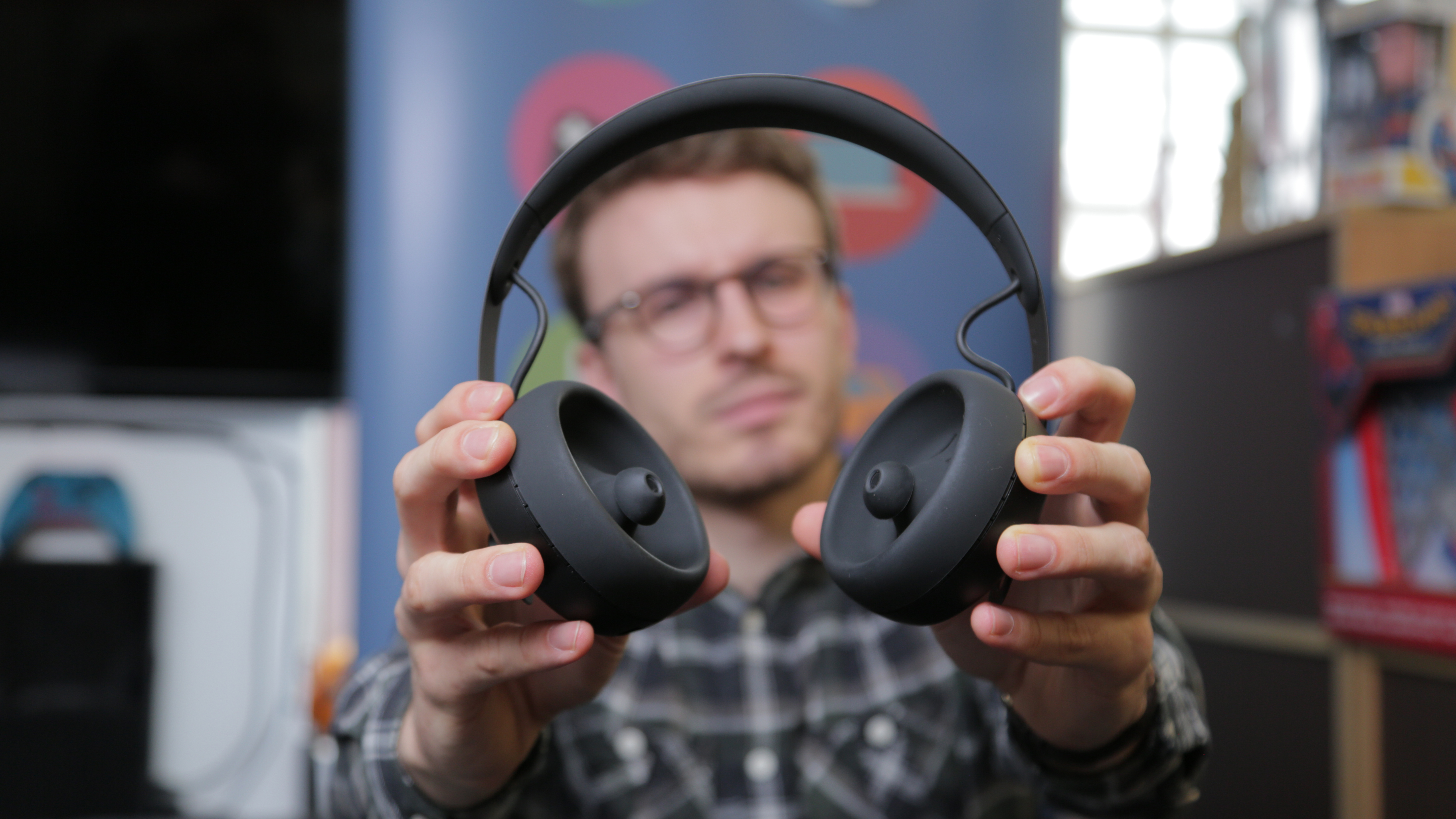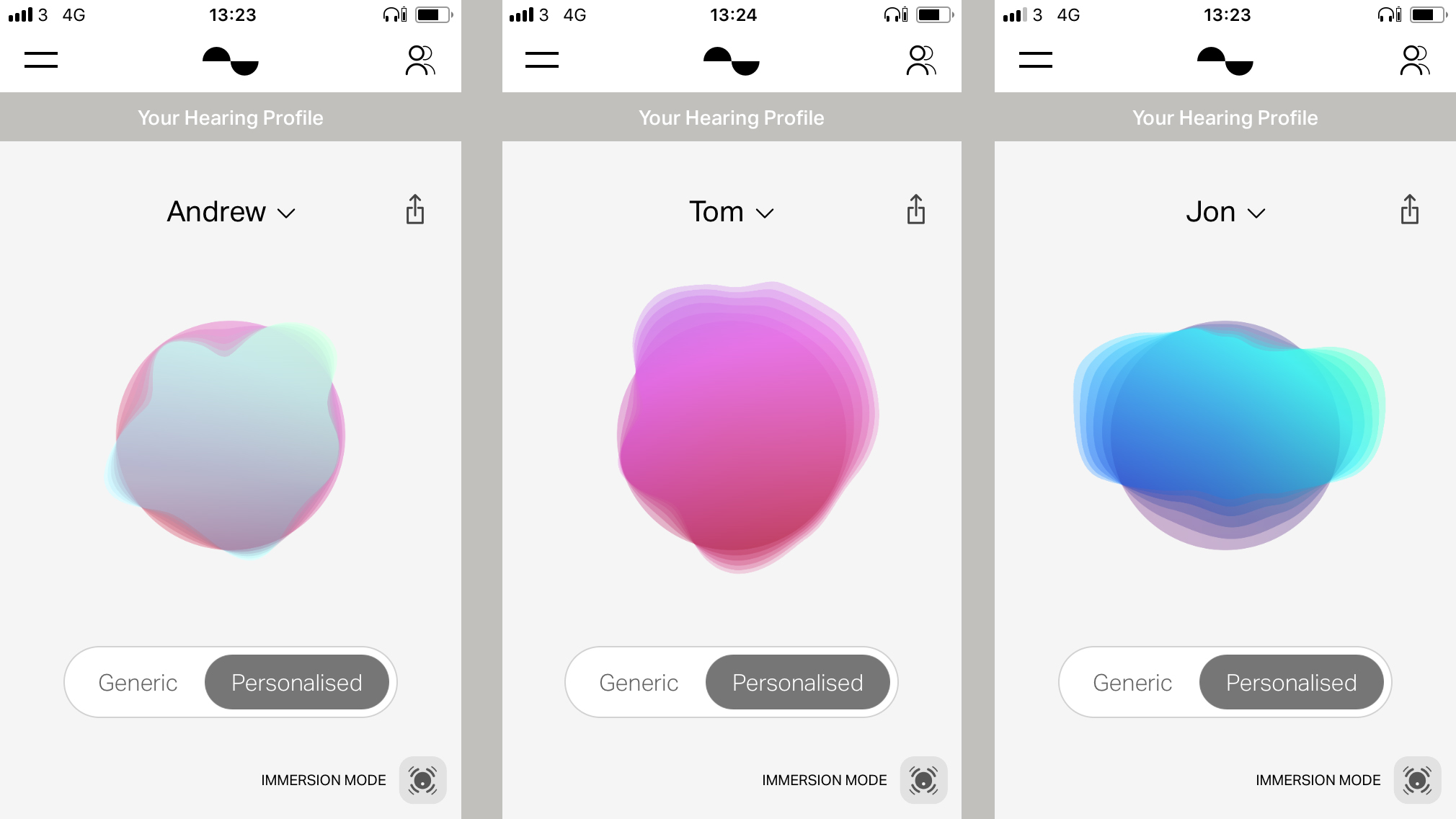TechRadar Verdict
More than any other pair of headphones we’ve tested, the Nuraphones are trying to do something entirely new with personal audio. They’ve got a pretty unique in-ear/over-ear hybrid design, some neat audio personalisation effects, and they also dispense with many of the additional buttons contained on normal headphones in favor of automatically switching on and off. While the fundamentals are there, occasionally the headphones are a bit too clever for their own good, resulting in a user-experience that can feel over-complicated.
Pros
- +
Rich, full sound
- +
Excellent passive noise isolation
- +
Some good EQ options
- +
Can be charged direct from phone
Cons
- -
Limited controls on headphones
- -
Form factor can be restricting
- -
Benefits of sound personalisation are subtle
Why you can trust TechRadar
[Update: The Nuraphones’ passive noise isolation blocks out external chatter incredibly well, and we never complained about the lack of noise cancelling in our original review. That said, nine months after we first got our hands on these quirky headphones, they’ve just had a seriously-meaty software update which includes, you guessed it – active noise cancelling. We’ve run through why this matters in the main review below.]
Never before have we seen a pair of headphones try so many interesting things.
After having been successfully funded on KickStarter, Nura’s debut pair of headphones, the Nuraphones, are finally available to buy as a finished product.
To say that these are a pair of headphones that are trying something new would be an understatement. Not only do they have a unique in-ear/over-ear hybrid design, they also claim to be able to tailor their sound to the way you listen to music and feature a sleek design devoid of many of the buttons common on wireless headphones.
Ultimately they succeed with much that they attempt. The form-factor worked much better than we expected it to, the sound personalisation adds an interesting element, and overall the headphones offer a great level of sound quality.
Check out our video review of the Nuraphones below.
But at a certain point these $399 (£349/AU$499) headphones can start to feel a little over-engineered, and perhaps a little too clever for their own good, even compared to other noise-cancelling headphones. Having headphones that can sense when you’re using them and turn themselves on and off accordingly is certainly clever, but on the occasions that it doesn’t you’ll wish Nura had just included an ‘Off’ button.
Sign up for breaking news, reviews, opinion, top tech deals, and more.
So too does the sound personalisation mostly work, but isn’t quite the gamechanger that we’d have hoped.
Ultimately Nura should be commended for aiming high with their debut product, it’s just a shame that not every shot has paid off.
Design and features
There’s a lot to discuss when it comes to the design of the Nuraphones. After all, this is a pair of headphones that almost consciously distances itself from the conventional wisdom surrounding most of its competitors.
This mentality is first apparent with their form factor. Look at someone wearing them, and the Nuraphones appear to be a fairly standard pair of over-ear headphones. They’ve got a slightly featureless plastic matt black design that, while not exactly boring looking, would fail to stand out in a crowd.
But take a peek on the inside of the headphones and you’ll immediately notice a pair of earbuds suspended within the wider cup.
If you’re anything like us you’ll immediately become suspicious of this design choice. Every pair of ears is shaped slightly differently after all, and it seems impossible that these earbuds would be able to fit inside any pair of ears.

The headphones feature a pretty interesting valve mechanism which Nura claims keeps your ears cool over long listening periods. The holes along the bottom and top of the headphones feature tiny Tesla valves that suck in cool air from below the headphones and expel warm air out of the top.
In practice, the headphones didn’t get too hot and stuffy, but we imagine this had more to do with the silicon construction rather than technology from the famous inventor.
But after both trying out the headphones on ourselves and a number of our colleagues in the office it seems these fears were unfounded. The earbud portion of the headphones have just enough flex in them to bend to the needs of your ears, and the result is a surprisingly comfortable fit.
Ostensibly this form factor was a decision made to benefit sound quality since it allows both an in-ear and an over-ear acoustic driver to be used in parallel, but for us the bigger benefit was the boost it gives to sound isolation.
Their form factor means you’ve not only got an earbud sitting at the entrance of your ear canal, but also an over-ear cushion sitting over your entire ear. This effectively means you’ve got two physical barriers meaning that the noise from the outside world can’t get to your ears.
To be clear, the Nuraphones are not noise-cancelling headphones, but their form factor blocks out high-frequency sounds (such as office chatter) better than any other pair of headphones we’ve ever used.
Unfortunately, the lack of active noise-cancellation means that you’ll still hear a lot of low-frequency background noise when using the headphones, which includes train or plane noise.
Although the earbud sits nicely in your ear when you’re wearing the headphones properly, their presence does mean that the Nuraphones are pretty uncomfortable to wear any other way. Trust us when we say that you’re not going to want to wear these headphones with just one earcup on.
Setup and sound personalisation
A key selling point of the Nuraphones is their ability to measure the sensitivity of your ears and adjust their sound so that you hear the maximum amount of detail in your music.
The thinking goes that different people’s ears hear different frequencies at different volume levels. Some people’s ears might be very sensitive to lower frequencies and less sensitive to higher frequencies, or vice versa.
This sound profiling means that the setup of these headphones is a little more involved than usual, and makes the usually optional headphone app an essential part of the experience.
The setup feels a little surreal in practice. After telling the app that you want to set up a new profile it will first establish that the headphones are firmly fixed in your ears, before playing a variety of frequencies into your ears.

According to Nura this process works by measuring the faint sounds emitted by your ears when they hear audio using a process known as otoacoustic emission.
Once the test has been performed, you’ll have the option of listening to music both with, and without, the sound personalisation effect applied.
Unsurprisingly, the personalised sound profile sounds a lot better than the ‘generic’ profile, but it’s a little odd just how bad the generic profile sounds.
After all, every other pair of headphones we’ve ever used has essentially been using a non-personalised ‘generic’ profile, and every single one of them sounds better than the generic profile setting on the Nuraphones.
So it’s a little difficult to work out if the sound personalisation technology is worth it at this stage, but thankfully the headphones allow you to set up a maximum of three different profiles for different listeners.
The Nuraphones are the first pair of wireless headphones we’ve seen that are able to charge directly from your phone. It works so well that we’re astounded more headphone manufacturers don’t do it. When plugged in music transfers over the cable directly, and this features a set of in-line controls.
In theory then, your own sound profile should sound superior to anyone else’s. In practice this seemed to bear out, though it didn’t quite happen 100% of the time.
We tested this out by having various members of the TechRadar office go through the setup process to create a sound profile. We then had them listen to a song of their choosing, while we switched between different sound profiles.
Without telling them which two profiles they were listening to, we then asked which they preferred.
Overall, people tended to prefer the sound of their own profile, but this didn’t happen 100% of the time, suggesting that the differences in profiles between two people can be very slight.
So it seems the sound profiling broadly does create a better sound for individual listeners, but depending on how average your hearing is, the difference might be difficult to perceive.
Active noise-cancelling
We were pleasantly surprised to find a host of new features in the Nuraphones' latest G2 software update, which adds a ton of value at no extra cost to owners of the headphones.
We never complained about the lack of noise cancelling in our original review, given how incredibly effective the passive sound isolation was – meaning the headphones’ passive ability to shield your ears from general external noise. Noise cancelling, on the other hand, refers to active sound emissions that dampen consistent, low-frequency background noise, like whirring fans or droning plane engines.
Now, noise cancelling is not something you’ll want to have on all the time. Noise cancelling creates a noise to counter the background noise, and the Nuraphone’s ‘created noise’ is more audible than that in similarly priced competitors – or the noticeably cheaper Sony MDR 1000Xs.
But on trains, in air-conditioned buildings and on planes, some active noise-cancelling is better than none. Given that you’re not paying a penny extra for the luxury, and the headphones retain their fantastic sound isolation, the Nuraphones’ latest update is a very welcome addition. That said, it’s also a reminder that not all noise cancelling was created equal, and that the real high point of the Nuraphones is still the passive noise isolation they had from the start.
In addition to noise cancelling, a new Social Mode intentionally lets background noise in so you can speak to people while listening to tunes. The update also packs in a battery indicator alert, multipoint pairing, and an auto power on/off feature – especially useful when it comes to saving battery.

Jon Porter is the ex-Home Technology Writer for TechRadar. He has also previously written for Practical Photoshop, Trusted Reviews, Inside Higher Ed, Al Bawaba, Gizmodo UK, Genetic Literacy Project, Via Satellite, Real Homes and Plant Services Magazine, and you can now find him writing for The Verge.
